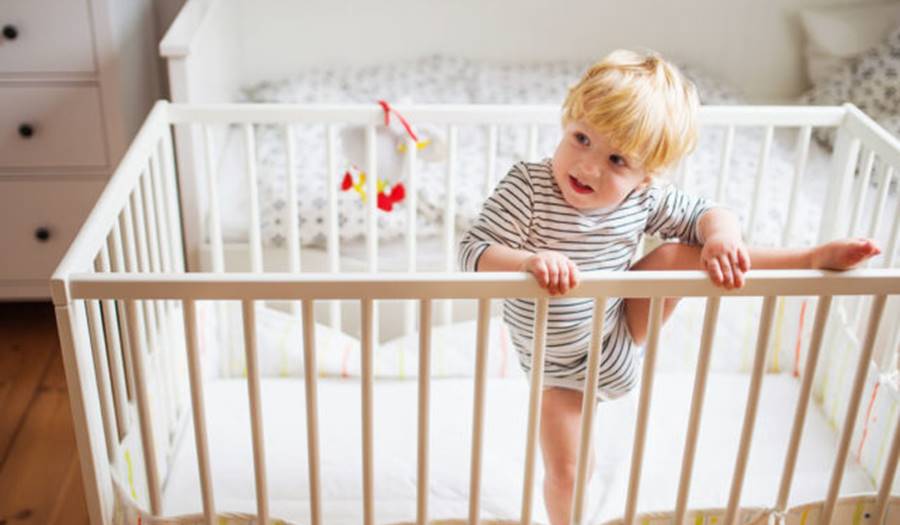
Sleep Solutions
11/16/2020
Trouble Shooting Sleep Issues
Over the past two weeks, we have explored setting strong sleep foundations for night sleep and naps. But children are tricky! They are constantly growing and developing. Despite doing all the things to set your child up for healthy, restorative sleep, we can often see kids have sleep issues at some point during childhood. This is one of our most common questions even with older children. Here we will troubleshoot some possible sleep issues and some solutions. This is not an exhaustive list of solutions but some suggestions. You must tailor your approach to your child and your family.

ILLNESS
Illness is one of the most common reasons for sleep issues. Whether it is a fever, cold symptoms, or vomiting, your child may have a hard time settling down to go to sleep, may wake more frequently, or may be up for a portion (or all) of the night. This is not a time for sleep training, rather a time to provide extra comfort. During periods of illness, it is important to treat their symptoms. For example, if your child has a cold you can elevate the head of their mattress or bed/crib, provide a humidifier in their room, and provide fever reducers. It is also important to offer fluids during night awake periods to help your child stay hydrated during illness.
Naps may also change with illness. Fever and illness make a child sleepier than usual during the day. They may take more frequent naps, shorter naps, or may take a longer nap. Your child needs rest when they are ill. As long as they are waking up for fluids and comfort, extra sleep can help them recuperate.

Children who have a good sleep foundation will often return to their normal sleep habits once they are feeling better. Try to keep your bedtime and nap routine as normal as possible during illness. Some kids may need a bit of help to get back into their normal sleep routine. Continue with the sleep foundations we discussed in the previous post.
SLEEP REGRESSIONS
We all dread sleep regressions! When do they normally happen? Most sleep regressions will occur at 4 months, 8-10 months, 12 months, 18 months, and 24 months. Your child may not experience all of these and there is variability to the timing. These regressions are developmental in causality. Your child is going through a period of rapid physical growth and development during these times. Often these times correspond to children learning to roll, crawl, walk or during a time of rapidly increasing vocabulary. Your baby may also become more aware of the world around them.
A strong sleep foundation can help your child transition during this time. But we need to remember, that your child’s sleep will change over time as will their awake periods. Therefore, if your child is going through a sleep regression, consider changing their awake time for naps or before bed. It may be time to drop a nap which may require an earlier bedtime. You want a consistent sleep routine but a flexible schedule that adapts and changes with your child.
BEDTIME ANXIETY
Separation Anxiety
Separation anxiety generally occurs in babies 8-10 months old and toddlers 16-18 months old. Your baby suddenly doesn’t want to leave you and when you do leave, even just to run to the bathroom, they get very upset. This separation anxiety is usually very apparent during the day but can also disrupt bedtime.
When your child is having a hard time separating for sleep, it is important to not get emotional. The more anxiety you show at this time, the more your baby will mirror that emotion back. Act confident. Develop a plan for getting through this hurdle and stay consistent. It is easy to try to comfort your child in other ways during this time, for example starting to rock your child to sleep or falling asleep with them can be easy fixes. But habits are very easily made at this age, so it is important not to start something you do not want to continue for a long time. Following your normal sleep routine while working with your child on self-soothing can help you quickly return to a more normal sleep schedule. Also providing reassurance, a quick goodbye ritual, and a confident exit from the room provide reassurance to your child.

Nighttime Fears
Older children can also have a hard time due to separation anxiety or fears. We often see this occur in children ages 3-6. The cause of this can also be developmental. They have wonderful imaginations, but their imaginations do not shut off at night. They may be scared of monsters or noises in their room. They also sometimes may stall bedtime by asking for drinks, bathroom breaks, or repeatedly leave their room.
If your child is having a hard time with bedtime, you and your partner should come up with a plan BEFORE bedtime. The plan should include what methods you and your partner will use to help your child back to bed. Once you have a plan, discuss this with your child. Make sure your child knows the bedtime routine what will happen at bedtime. And then most importantly, use your plan in a confident and calm manner.
If your child is scared, you can absolutely reassure them and provide comfort. Often just sitting with them for 5 minutes can be enough to reassure them they are safe and help them work through their fears. Let your child identify their fear. If they are scared of something imaginary, do not confirm that this imaginary creature exists. Reassure them that they are safe. During the daytime work on building up their confidence and coping skills. Practicing these skills during the day can help them be more successful at night. You can also allow your child a comfort object or nightlight.
Some children find setting up check-ins can be reassuring. Make sure your original plan includes HOW many check ins you will do and stay consistent with that agreement. Also, do not tell your child you will check in in 5 minutes as they often have no concept of time. A better example would be to say, I’m going to go fold the laundry and then come back and check on you.
Older children can often do well with a reward system. For example, you can discuss them not coming out of their bed and why it is important for them to stay in bed and get a good night’s sleep. Set a reasonable and small goal. For example, work on getting out at bedtime before working on middle of night awakenings. Sometimes a goal that is too broad is too overwhelming. Once you have determined a goal, determine the reward. For example, every night they meet their goal, they get a sticker and after a week of stickers, they can get a surprise or a toy they have wanted. My 3rd child was 3 years old and loved to come say “Hi” every night at 2am. We discussed a reward system. He loves money so we told him that if he stayed in bed during the night, he would get $1 in the morning. It was the best $7 we have ever spent! A week was enough to create and solidify the new routine.
TODDLERS
Toddlers are adorable but they are also very opinionated and very vocal about those opinions. And they are very smart. They start to express their needs and wants and learn quickly how far to push to get their own way. But as parents, our job is to set boundaries and setting boundaries around sleep is essential for childhood development. Children who don’t have clear boundaries can often be confused and that can show up in behavioral issues.
Refusal
If your toddler is refusing to go to bed, it can lead to prolonged bedtime battles. Toddlers are willful and are willing to fight for what they want, sometimes for hours. Toddlers often want to get out of bed but during this stage of development sleep is essential. An overtired toddler can be exhausting. And as we learned previously, being overtired results in more disrupted night sleep. Toddlers understand so much of what we say to them. It is helpful to explain your routine, especially if the routine is changing, and offer them some control or choices. For example, they can choose their pajamas from 2 options you provide, which books to read, or who reads the books to them. Allowing your child to make decisions during this process helps promote cooperation and independence. And remember, stay consistent with your routine and reinforcement of their sleep foundation.
Escaping
Toddlers can also try to get out of their crib. And often once they know they can do it, they often do it repeatedly. This can be dangerous due to the risk of falling. If you have a child who is climbing out of their crib, it is essential to work toward a solution quickly. Often this means moving to a toddler bed or a regular sized bed sooner than anticipated. Sometimes it even means a mattress on the floor for a few nights! When my 3rd child started crawling out of his crib at 14 months, we had to convert his bed to a toddler bed at 9:30pm because he would not stay in and the risk of him injuring himself was too high for us to be comfortable keeping him in his crib. Of note, crib tents are not recommended to be used by the American Academy of Pediatrics. They can be a safety hazard and a dangerous in a fire.
Escaping children provide further challenges to keeping them safe. Make sure your child’s room is childproofed. Make sure you have outlet covers, furniture straps that secure their furniture to the wall, and no chemicals or medications are in the room. Any breakable items such as lamps or items with cords should be secured or removed from the room. Make sure certain items are kept out of reach, as we have heard a few stories of children decorating their room with diaper cream! Install baby gates for any stairs your child would have access to if they leave their room and consider childproofing their door with a door-knob child lock on the inside of their room so you can easily get in but they cannot easily get out and wander the house.

CHANGES
New Bedroom
The American Academy of Pediatrics recommends having your baby sleep in your room initially. But how do we transition a baby to their own room? Some babies require no transition and will adapt quickly to their new environment. This is especially true if it is not new. Practicing one nap a day in the crib or having some awake time in the crib every day can help make the crib a safe and familiar setting. If your child needs a slower transition, we recommend going into their room frequently. Before moving your child into their own room, do your whole nap and bedtime routines in their new room. The first night, or even a few nights, you can have them sleep in their familiar sleeping area, such as a portable crib (Pack ‘n Play) or bassinet that has been moved to their new room.
Crib to Bed
Eventually, your child will move into a bed. We recommend waiting as long as you can to make this transition. Reasons to make the transition would be your child is too tall for the crib, they are over 3 years old and potty trained at night, or they are climbing out of their crib. If you undertake this too early, it can often create sleep problems with nap refusal and bedtime struggles. It can also be a safety issue with children being able to access things in their room, potentially climb and tip over furniture (please make sure all furniture is secured to the wall,) or leave their room.
When your child is ready to move into a bed, transitioning will depend on if your crib converts to a bed or if they are getting a new bed. Often if it is a convertible crib, the transition can be easier because it is a familiar bedspace. These types of cribs can also be easily changed into a toddler bed before becoming a larger bed. The toddler bed generally has a built-in guard to help your child not fall out, it is low to the ground, and uses their toddler mattress. If your child is getting a new bed, it can be helpful to have both the bed and crib set up in the room during the transition.
When moving an older child to a new bed, talk to them and prepare them for the change. Children can have a hard time with change so giving them time to prepare and not making too many sudden changes can result in an easier transition. Including your child on the planning can also help ease this transition. Your child may pick the date on the calendar for the change to happen, or you can include them in choosing a new pillow or their bedding.
SLEEP PROBLEM RESOURCES
BOOKS: HERE
WEBSITES: www.takingcarababies.com; www.biglittlefeelings.com
Sleep is essential to all human beings, loved by adults, and often refused by children! We hope you were able to learn about setting healthy sleep foundations for nighttime sleep and naps as well as learn some common sleeping problems. We know this is not comprehensive. The sidebar contains links to books and programs that you may find helpful if you are struggling with your child’s sleep. Also, please do not hesitate to talk to your provider if your child has any sleep issues.
Children’s Health Care of Newburyport, Massachusetts and Haverhill, Massachusetts is a pediatric healthcare practice providing care for families across the North Shore, Merrimack Valley, southern New Hampshire, and the Seacoast regions. The Children’s Health Care team includes pediatricians and pediatric nurse practitioners who provide comprehensive pediatric health care for children, including newborns, toddlers, school aged children, adolescents, and young adults. Our child-centered and family-focused approach covers preventative and urgent care, immunizations, and specialist referrals. Our services include an on-site pediatric nutritionist, special needs care coordinator, and social workers. We also have walk-in appointments available at all of our locations for acute sick visits. Please visit chcmass.com where you will find information about our pediatric doctors, nurse practitioners, as well as our hours and services.
Disclaimer: this health information is for educational purposes only. You, the reader, assume full responsibility for how you choose to use it.








